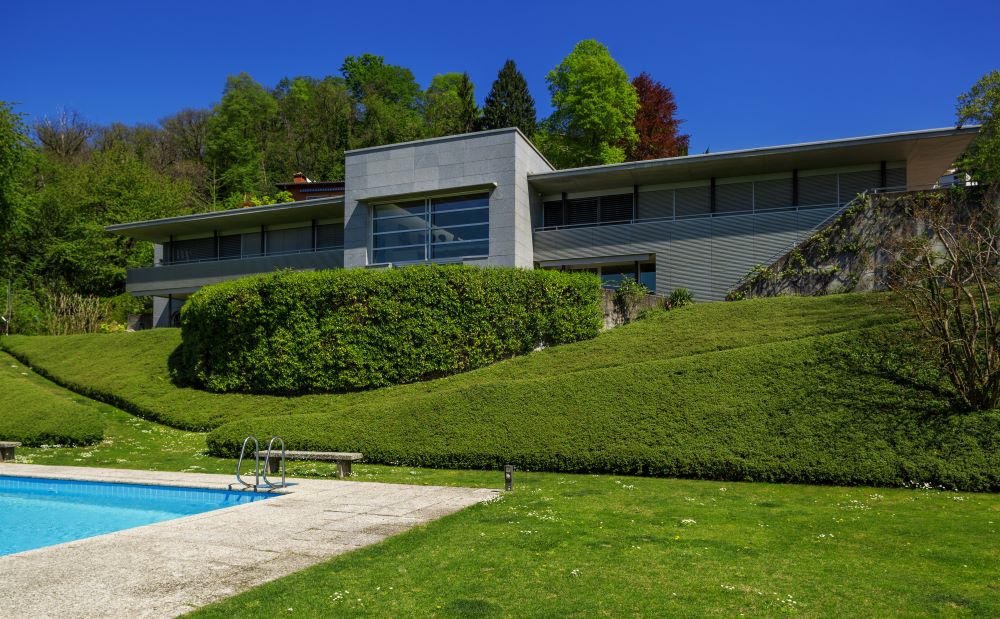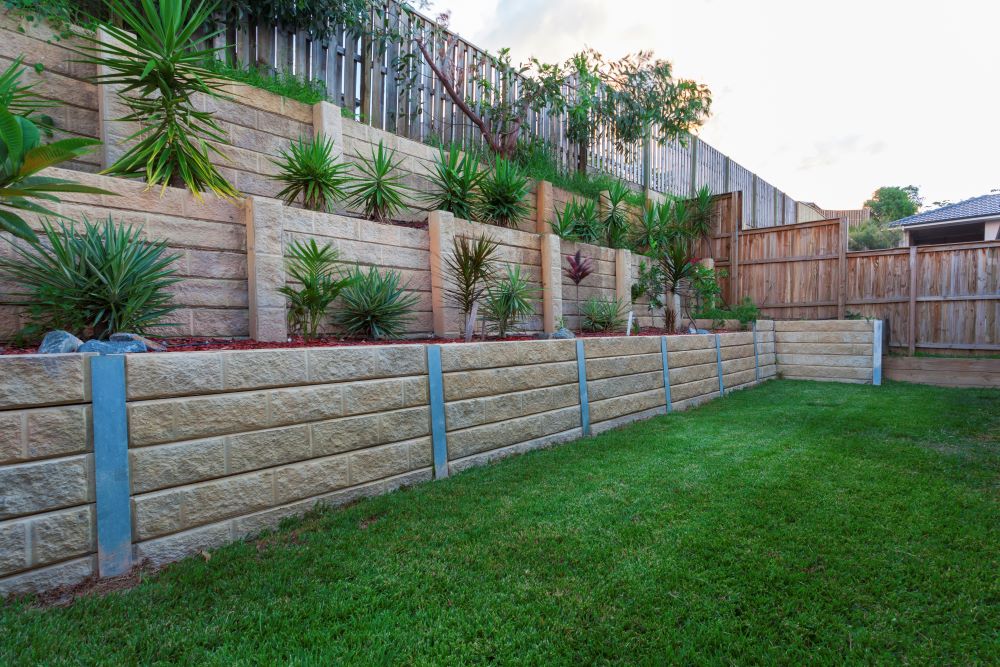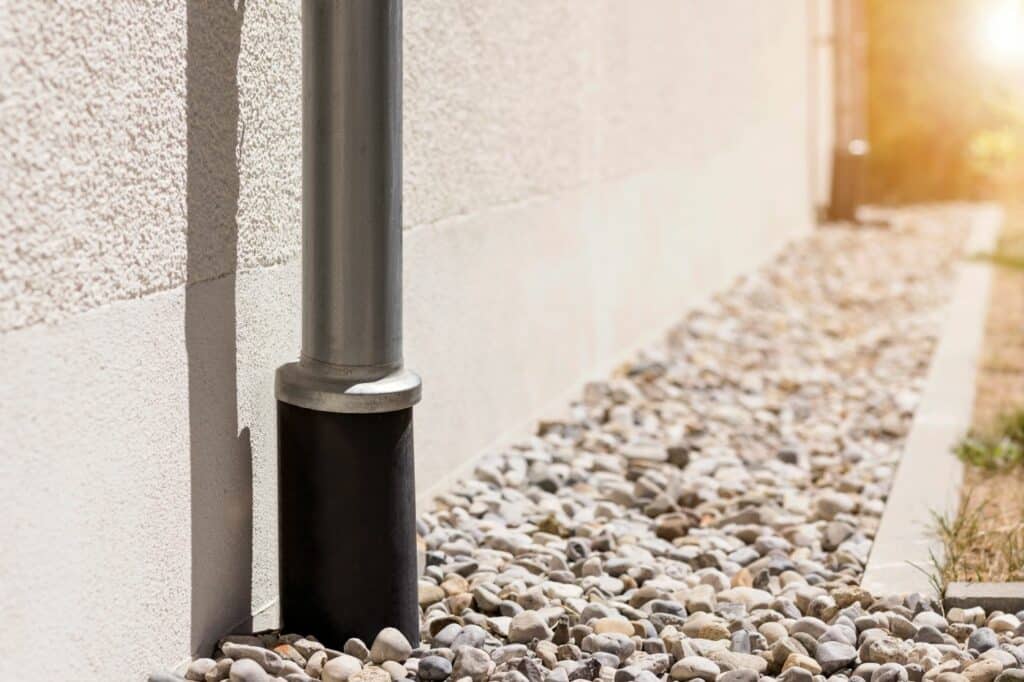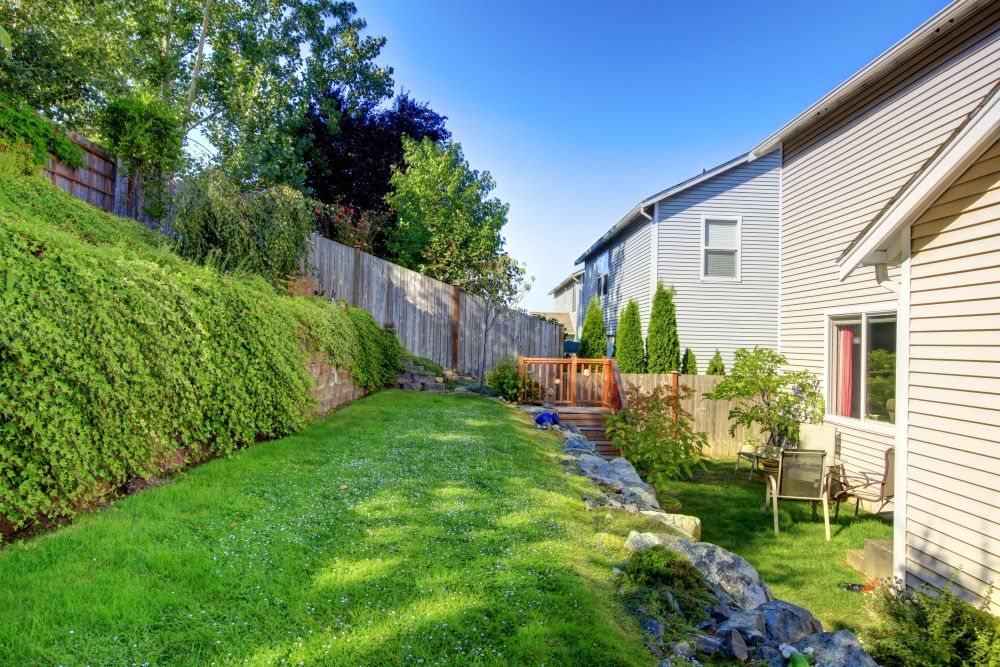Auckland’s Drainlaying: Slope Solutions Advice For Better Drainage

Living on a property with slopes or uneven terrain can be challenging, especially when it comes to managing water runoff. As experienced drainlayers in Auckland, we understand the importance of effective drainage solutions for properties facing such challenges. In this article, we’ll examine some practical strategies to address drainage considerations in your landscaping and keep your property dry and secure.
Understanding the Challenge
Living on a property with slopes or uneven landscapes presents unique challenges when it comes to water runoff. Here’s a closer look at the issues you might encounter and why addressing them is crucial:
Erosion Threat:
Sloped properties are more susceptible to erosion, especially during heavy rain. As rainwater flows downhill, it can carry away soil, leading to the gradual wearing away of the landscape. This erosion not only alters the appearance of your property but can also compromise its structural integrity over time.
Water Pooling Concerns:
Uneven terrains often result in areas where water can pool. When water accumulates in low-lying spots, it creates inconvenient, soggy, marshy conditions and can become insect breeding grounds. Additionally, stagnant water poses a risk of damaging plants and compromising the overall health of your landscape.
Foundation Damage Risk:
One of the most significant concerns for properties with slopes is potential damage to the foundation. Excessive water runoff, if not properly managed, can exert pressure on your home’s foundation. Over time, this pressure can lead to cracks, shifts, or other issues that may compromise the stability of your property.
Given these challenges, it becomes evident that addressing water runoff issues is not just about maintaining the appearance of your landscape but is crucial for your property’s long-term health and stability.
To tackle these problems effectively, it’s essential to implement drainage solutions specifically designed for properties with sloped or uneven terrain. As drain layers in Auckland, we are experts in assessing the unique needs of such landscapes. We can also recommend and install systems that redirect water away from vulnerable areas, mitigating erosion, preventing water pooling, and safeguarding your property’s foundation against potential damage. Adequately addressing these challenges ensures a more resilient and secure environment for your home on sloped landscapes.
Managing Surface Water Runoff:
Managing surface water runoff in hilly landscapes is crucial to prevent erosion, water pooling, and potential damage to your property. Let’s delve deeper into why this is a primary concern and how professional drainlaying in Auckland plays a pivotal role in addressing it:
Terrain Challenges:
On properties with slopes, water naturally follows the downward slope, and during heavy rain, it can gain significant force. If left unmanaged, this runoff can carve channels into the soil, leading to erosion and altering the landscape. The force of the water can also contribute to soil displacement, potentially compromising the stability of the terrain.
Vulnerable Areas:
Certain areas of your property may be more vulnerable to water runoff than others. These vulnerable spots could include the base of slopes, areas near foundations, or places where water tends to accumulate. Identifying and managing these areas is crucial to prevent potential damage.
The Importance of Drainlaying
This is where the expertise of drainlayers becomes essential. Drainlayers are trained professionals who specialise in designing and installing drainage systems tailored to your property’s specific needs. They assess your landscape’s unique topography and strategically plan and implement drainage solutions to redirect surface water away from vulnerable areas.
Preventing Erosion:
Drainlayers utilise various techniques and technologies to prevent erosion caused by surface water runoff. This may involve installing channels, berms, or other structures that guide water safely away from sensitive areas. By preventing erosion, drainlayers maintain the integrity and aesthetics of your property.
Safeguarding Foundations:
Redirecting surface water runoff near the foundation of your home is particularly crucial. Water accumulating around the foundation can lead to structural issues over time. Drainlayers design systems that efficiently move water away from the foundation, reducing the risk of damage and preserving the stability of your home.
In summary, managing surface water runoff on hilly landscapes is a multifaceted challenge that requires expertise and precision. Drainlayers in Auckland play a vital role in this process, offering specialised knowledge to design and install drainage systems that effectively redirect water away from vulnerable areas. Investing in professional drainlaying not only safeguards your property from erosion and water damage but also ensures the long-term resilience of your landscape on uneven terrains.

Retaining Walls: Your Sturdy Allies
Retaining walls are invaluable solutions for properties with slopes, offering a combination of functional benefits and aesthetic appeal. Let’s explore why these structures are considered sturdy allies, especially for managing the challenges of sloped landscapes:
Preventing Soil Erosion:
One of the primary roles of retaining walls is to prevent soil erosion on sloped terrains. When it rains, water can wash away soil down the slope, leading to erosion and altering the landscape over time. Retaining walls act as barriers, holding back the soil and preventing it from being carried away by water runoff. This not only protects the integrity of your landscape but also maintains the structure of the terrain.
Creating Flat Areas:
Retaining walls are designed to create flat or gently sloping areas on a property. These levelled areas are more accessible to drain and maintain, providing a more stable surface for various uses, such as gardening, landscaping, or even creating outdoor living spaces. By levelling the terrain, retaining walls contribute to the usability of the space while addressing the challenges posed by the slope.
Enhancing Visual Appeal:
Beyond their functional benefits, retaining walls add a touch of visual appeal to your property. They come in various materials and designs, allowing you to choose options that complement the overall aesthetics of your landscape. Whether made of timber, concrete, or stone, retaining walls can be customised to enhance the beauty of your property while serving a practical purpose.
Supporting Structural Stability:
Retaining walls provide structural support to the landscape. By holding back soil and preventing erosion, they contribute to the overall stability of the terrain. This is especially important on steep slopes where the natural forces of gravity and water runoff can exert significant pressure on the land.
Integrated Drainage Solutions:
Retaining walls can be designed to incorporate drainage systems, further enhancing their effectiveness in managing water. Drainage behind the retaining wall helps to alleviate pressure. It prevents water from accumulating, reducing the risk of soil saturation and erosion.
Retaining walls play a crucial role in addressing the challenges of sloped landscapes. They are not only functional in preventing soil erosion and creating level areas but also contribute to the visual appeal and structural stability of your property. When strategically designed and installed, retaining walls become sturdy allies that enhance both the usability and beauty of your landscape on properties with varying elevations.
French Drains: A Hidden Hero
Despite their discreet underground nature, French drains emerge as hidden heroes in managing water efficiently on sloped properties in Auckland. Let’s uncover why these drainage systems are considered heroes and how they contribute to safeguarding your property.

What Is A French Drain?
A French drain is a type of drainage system designed to manage and redirect excess water away from a specific area, typically preventing water accumulation and potential damage. This underground drainage solution is especially effective in mitigating water-related issues, such as poor drainage around homes, basement flooding, or erosion.
Key components of a French drain include:
- Perforated Pipe: The core of a French drain is a perforated pipe, usually made of plastic or PVC. This pipe allows water to enter through small holes along its length.
- Gravel or Aggregate: The perforated pipe is surrounded by a layer of gravel or aggregate. This material serves multiple purposes, including providing a pathway for water to flow, preventing soil from clogging the pipe, and promoting efficient drainage.
- Geotextile Fabric (Optional): In some installations, a geotextile fabric may be used to wrap the pipe and gravel. This fabric acts as a barrier, preventing fine soil particles from entering the drainage system while allowing water to pass through.
How a French Drain Works:
- Water Collection: When excess water accumulates in the soil, it naturally follows the path of least resistance. The French drain intercepts this water and directs it into the perforated pipe.
- Perforated Pipe Absorption: As water enters the perforated pipe, it flows through the small holes, preventing saturation of the surrounding soil. This helps to manage water levels effectively.
- Efficient Water Redistribution: The collected water is then redirected away from the problem area, efficiently managing surface or subsurface water runoff. This prevents water from pooling around foundations, basements, or landscapes.
Common Applications of French Drains:
- Residential Drainage: French drains are commonly used around residential properties to address basement flooding, water pooling in yards, or soggy soil in garden areas.
- Landscape Drainage: French drains are employed in landscaping to manage excess water on slopes, preventing erosion and promoting optimal drainage in hilly terrains.
- Foundation Protection: Installing a French drain around the perimeter of a home’s foundation helps prevent water from accumulating near the structure, reducing the risk of foundation damage.
- Sports Fields and Golf Courses: French drains are utilised in sports fields and golf courses to maintain proper drainage, ensuring playing surfaces remain dry and safe.
Underground Efficiency:
The beauty of French drains lies in their underground design. They operate quietly beneath the surface, efficiently managing water without compromising the aesthetics of your landscape. This makes them an ideal solution for homeowners seeking effective drainage without visible alterations to their outdoor spaces.
Redirection of Water:
French drains are strategically designed to redirect water away from vulnerable areas. The system typically consists of a perforated pipe surrounded by gravel or aggregate. As water seeps into the ground, it’s collected by the perforated pipe and channelled away from areas prone to water accumulation. This proactive approach helps prevent issues such as water pooling and soil saturation.
Natural Flow Mechanism:
The use of gravel or aggregate around the perforated pipe allows water to flow away naturally. This natural drainage mechanism ensures that water is efficiently and gradually dispersed, reducing the risk of erosion and water-related damage to the landscape. French drains are particularly effective in managing water flow on sloped properties, where gravity plays a significant role in the movement of water.
Versatility in Placement:
One of the French drains’ critical strengths is their versatility in placement. They can be strategically installed in various areas of your property to target specific drainage needs. Whether addressing water runoff from a sloped lawn or preventing water accumulation near foundations, French drains can be customised and placed where they are most needed.
Mitigating Water-related Issues:
French drains act as proactive measures against potential water-related issues. By efficiently managing water runoff, they help prevent soil erosion, protect your home’s foundation, and maintain the overall health of your landscape. This makes them a hidden hero as slope solutions in preserving the integrity of your property on sloped terrains.
In summary, French drains are the unsung heroes of drainage solutions, working quietly beneath the surface to manage water efficiently on sloped properties. Their ability to redirect water away from vulnerable areas, combined with a natural flow mechanism, makes them a valuable asset in maintaining the health and stability of your landscape. When strategically placed, French drains become the hidden heroes that ensure your property remains dry and resilient against the challenges of water runoff on slopes. Talk to us at Fox Drainage; we can help you with your Auckland property’s drainage solutions.
Terracing As Slope Solutions
Terracing is a landscaping technique that goes beyond aesthetics – it’s a powerful strategy for managing water runoff effectively on sloped properties in Auckland. Let’s explore why terracing is considered an optimal solution and how it contributes to both the beauty and functionality of your landscape.

Creating Flat Areas on Slopes:
Terracing involves creating flat areas resembling steps on a slope. This not only adds visual appeal to your property but also serves a crucial purpose in managing water runoff. By breaking down the slope into a series of levelled terraces, the force of water is reduced, preventing soil erosion and creating a more stable environment.
Aesthetic Value:
One of the standout features of terracing is its ability to enhance the visual appeal of your landscape. The stepped structure creates an interesting and dynamic layout, adding character to your property. Different plants, flowers, or even seating areas can be incorporated on each terrace, transforming your sloped land into an aesthetically pleasing and functional space.
Mini-Drainage Zones:
Each terrace acts as a mini-drainage zone, effectively managing water runoff on a smaller scale. As rainwater flows down the slope, it is intercepted by each terrace, allowing it to soak into the soil or be directed to specific drainage points. This distributed approach helps prevent water accumulation and erosion by breaking down the overall water flow into manageable segments.
Preventing Water Accumulation:
Terracing plays a key role in preventing water accumulation on each level. The flat surfaces of each terrace allow water to permeate into the soil more effectively, reducing the risk of pooling. This particularly benefits plant health, as excessive water accumulation can lead to root rot and other issues.
Erosion Control Slope Solutions:
The levelled structure of terraces helps control erosion by slowing down the flow of water. Instead of rushing down the entire slope, water is intercepted at each terrace, allowing it to be absorbed or directed away gradually. This controlled flow mitigates the risk of soil erosion and maintains the stability of the landscape.
Terracing as slope solutions is a versatile and effective strategy for managing water runoff on sloped properties. Beyond its visual appeal, terracing creates flat areas that act as mini-drainage zones, preventing water accumulation and erosion.
By incorporating this slope solutions technique into your landscaping, you not only enhance the aesthetic value of your property but also ensure optimal drainage, contributing to the long-term health and stability of your landscape on hilly terrains.
Conclusion: Auckland’s Drainlaying: Slope Solutions Advice For Better Drainage
Addressing drainage considerations on sloped or uneven landscapes requires careful planning and professional expertise. By incorporating slope solutions strategies such as retaining walls, French drains, and terracing, Auckland drain layers can create effective drainage solutions tailored to your property’s unique needs.
If you’re facing drainage challenges on your hilly property, consult with us at Fox Drainage, your experienced drainlaying experts in Auckland, to ensure a dry and secure environment for your home.
We do Residential, Public and Commercial drainage. Talk to us now.
